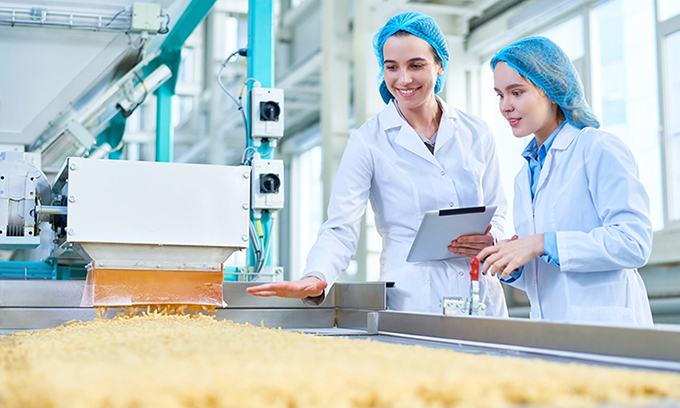
Like other industries, the food and beverage processing industry has seen various trends due to changes in customer interests, the need to drive down costs, and advances in technology. Here are some of the most notable trends in the food industry.
1. Hygiene and Safety Standards
The COVD-19 pandemic and the risk of its spread increased the need for all food manufacturers to follow proper hygiene procedures and protocols. Apart from COVID, there are various microbial contaminants that could pose serious health risks to consumers. Companies are creating and diligently implementing robust food safety programs to benefit their employees and customers.
Four key areas that food processors are focusing on in the area of hygiene are cleaning, chilling, cooking, and cross-contamination. Hygiene standards require that food areas and equipment be cleaned and disinfected between different tasks, especially where raw food is prepared. Also, food packaging hygiene must be given particular attention. According to Cavanna, a flowpack and cartoning equipment manufacturer, ”Food packaging equipment should have sanitary washdown designs to allow ease of cleaning and total food safety.”
2. Dedication to Sustainability
There is an increasing demand for sustainability in the food industry’s practices and processes to reduce environmental footprints. Consumers are aware of how the brands they support and their personal decisions impact the environment. This desire to help the planet has driven up the popularity of earth-friendly food packaging and processing methods. In fact, many consumers are willing to pay more to feel like they are helping the planet. As a result, companies have adjusted their practices to give them a competitive edge and customer loyalty.
Ingredients that were once considered throwaways are now reused. For instance, spent grain from breweries is upcycled to make keto flour, while coffee grounds are used in the manufacture of skincare products. Many customers readily opt for products with upcycled ingredients because of sustainability and the perceived freshness and health benefits of such products. Other trends gaining support are reduced water consumption and the use of eco-friendly detergents and other cleaning solutions that are not harmful to the environment.
3. Plant-Based Alternatives and Flavors
Consumers have become more health-conscious in their food choices and are switching to plant-based diets. This trend increased significantly between 2021 and 2022 and is expected to surpass its current level over time. Products like veggie dogs and veggie chicken nuggets have become the order of the day due to their health benefits. Usually, such products are specifically designed to taste, look, and feel like real meat, making them appeal not just to vegans or vegetarians but to real meat-eaters.
Many food companies have taken their flavor game to the next level. As people have become more informed and receptive to other cultures, they encounter more exotic flavors in the process. This has increased the demand for wider varieties of flavors, pressuring food companies to come up with products that cater to this demand. Companies that are quick to respond to customers’ needs for flavor are able to stay ahead of the competition.
4. Innovative Technology and Operations
Food companies are now looking for newer technologies to enable them to standardize their product categories, increase efficiency, and minimize costs. As a result, they’re developing new cost models and adopting a more flexible approach to their modes of operation. Food manufacturers are modernizing their activities and becoming flexible with their sourcing and distribution strategies.
This provides visibility into the actual costs of manufacturing food products. Those who once overlooked the profitability of manufacturing plant-based alternatives, for instance, are now diving deeper and examining the profitability of specific product categories.
5. Automation
There is an increased demand for automation in the food industry due to the labor shortages brought about by the COVID-19 pandemic and shifting workforce priorities. Automation is helping food manufacturers meet their goals with fewer employees on-site. It enhances quality control processes since defects can be quickly pinpointed, isolated, and resolved. Also, automation improves food safety since manufacturers can now gain a more granular view of their entire process. This helps ensure that one change in the manufacturing process doesn’t cause adverse consequences in another.
When deployed correctly, automation enables better efficiency in food manufacturing processes, improves efficiency cost, and reduces waste better than manual processes. Furthermore, automation enhances end-to-end traceability, which improves supply chain management. Once an ingredient or product enters a supply chain, it can be scanned automatically and entered into an ERP (enterprise resource planning) system. ERP systems are software products that automate and manage companies’ supply chains, financials, operations, and reporting.
